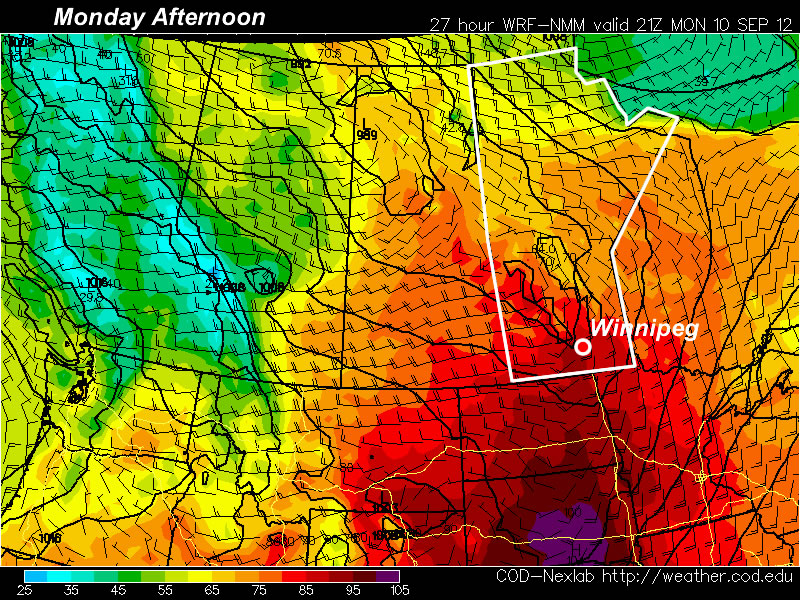We’ll be in for a couple of chilly, perhaps you could even say frosty, days to start this week. Cool daytime highs and sub-zero nighttime lows are on tap.
After a rather chilly Monday morning, temperatures won’t make a dramatic recovery for the afternoon. Daytime highs on the first day of the week are expected to barely make the double digits in most areas, with highs generally in the 9-12C range expected. A breezy north wind and perhaps a couple of lake-effect showers won’t make the day any more pleasant. Tuesday night should be another cool one in Southern Manitoba. However, it appears frost will be isolated to areas around and east of the Red River Valley as some warmer air moving in from the west will keep temperatures above zero overnight in Western Manitoba. Daytime highs on Tuesday will be an improvement from Monday, though except for South-Western Manitoba where 20C values are expected, temperatures will generally remain stuck in the mid teens.
Yet another cold front will swing through overnight Tuesday into Wednesday ushering in another cool airmass to end the week. It appears high temperatures will be relegated to the teens from Wednesday through Friday. There appears to be slim odds of any significant precipitation this week, though we may at least get some measureable rain later in the week as a few strong impulses rotate through the region.
At this point the long range forecast looks fairly status quo. We’ll see some cooler than normal days and some warmer than normal days, but in general the pattern for the next week or two generally looks to be near normal on average. However, there will certainly be a fall feel to the air as nighttime temperatures regular drop down to the freezing mark and daytime highs stay close to the average high for mid-September of 18C.





